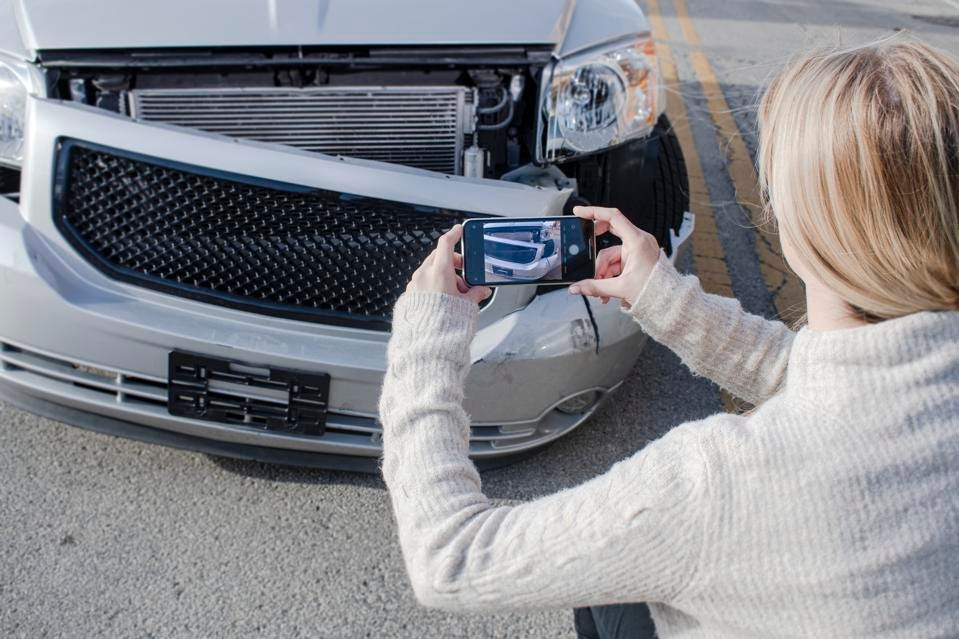“All In on AI,” are companies who have made substantial and long-term bets on the notion that AI will revolutionize the way they do business.
Forbes
Tom Davenport,
Contributor CIO Network
March 7th, 2022
Githesh Ramamurthy, Chairman and CEO of CCC Intelligent Solutions.
HEATHER EIDSON
Executive Summary
by Joaquim Cardoso MSc.
Chief Editor of “The Health Strategy Blog”
March 20, 2022
“All In on AI,” are companies who have made substantial and long-term bets on the notion that AI will revolutionize the way they do business.
In several of the companies, the CEOs have been heavily engaged in the AI-driven transformation process.
- One of them is Piyush Gupta, the CEO of Singapore-based DBS Bank, whom I have written about elsewhere as an AI leader.
- Another is Peter Ma, the founder and chairman of Ping An, which is the largest private-sector firm in China. Ping An makes extensive use of AI to drive its five ecosystems, and my sources tell me that Ma is heavily involved in the decisions around the technology.
But this heavy CEO AI orientation isn’t just present among giant Asian companies’ CEOs.
- At CCC Intelligent Solutions, a midsize company based in Chicago that dominates AI-based image analysis for automobile insurance claims and collision damage assessment, the CEO, Githesh Ramamurthy, was previously Chief Technology Officer.
For CEOs to be able to make successful bets on AI and other technologies doesn’t necessarily require a strong technical background, but it certainly helps.
No doubt a few companies will make successful bets on AI based primarily on lucky guesses.
But if you want decisions about this powerful force for transforming business to be based on something other than luck, you might want to educate yourself-or help educate your leadership-on what AI can do now and in the future.

Introduction
For a forthcoming book with Nitin Mittal of Deloitte, I’ve been researching companies that are “All In on AI,” as the book will be titled.
These are companies who have made substantial and long-term bets on the notion that AI will revolutionize the way they do business.
In several of the companies, the CEOs have been heavily engaged in the AI-driven transformation process.
- One of them is Piyush Gupta, the CEO of Singapore-based DBS Bank, whom I have written about elsewhere as an AI leader.
- Another is Peter Ma, the founder and chairman of Ping An, which is the largest private-sector firm in China. Ping An makes extensive use of AI to drive its five ecosystems, and my sources tell me that Ma is heavily involved in the decisions around the technology.
In several of the companies, the CEOs have been heavily engaged in the AI-driven transformation process.
But this heavy CEO AI orientation isn’t just present among giant Asian companies’ CEOs.
At CCC Intelligent Solutions, a midsize company based in Chicago that dominates AI-based image analysis for automobile insurance claims and collision damage assessment, the CEO, Githesh Ramamurthy, was previously Chief Technology Officer.
But this heavy CEO AI orientation isn’t just present among giant Asian companies’ CEOs.
As a technologist, he was able to drive the company in several critical directions based on long-term bets on how technology would evolve.
The bets included:
- An early move to the cloud to store and process data across a broad ecosystem;
- An investigation and eventual implementation of collision damage image assessment based on guided photos taken by vehicle owners with their smartphones;
- Most recently, a bet that autonomous and semi-autonomous vehicle insurance will require substantial data from telematics and AI systems in the vehicle to assess damage from and culpability for an accident.
A Vision of Automated Image-Based Estimates
The company’s long journey toward automated-or at least semi-automated-collision repair estimates based on vehicle images is perhaps the best illustration of Ramamurthy’s AI vision. The company had accumulated billions of images over its history, but for most of that time the images were used by human adjusters to assess and record damage. Also for most of CCC’s history, the images were taken by the adjusters at the site of the damaged vehicle, or by repair sites. These photos required professional cameras with special graphics cards to store and send the images.
Almost a decade ago, however, Ramamurthy noticed that amateur cameras were getting better at a rapid pace, and even that they were being incorporated into smartphones.
He envisioned a time when the owners of damaged vehicles would be able to take their own photos of their vehicles. He asked his Chief Scientist at the time to figure out whether this was possible with collision damage images. He engaged several professors at leading universities to help explore the issue. A little later, Ramamurthy began to read about a new AI approach to image analysis-deep learning neural networks-that with enough training data could sometimes equal or exceed human capabilities. It then became clear that graphics processing units (GPUs) were very fast at analyzing images, so CCC bought some from Nvidia-the only source at the time.
Eventually Ramamurthy decided that it was indeed possible that an image analysis solution could be developed.
He assembled a pool of talented data scientists, who learned how to map photos onto the structure of different vehicles, and to annotate or label the photos for training the models. CCC had a billion photos and a trillion dollars in claims with which to train. By 2018 the team had some fantastic prototypes running in the company’s research lab, but then the challenge became to incorporate the solution into CCC and customer workflows. To have a production system that could be used with every vehicle, every customer, and every type of repair was daunting. The system would also need to incorporate clear thresholds specifying when it should be used and when it shouldn’t, as well as guardrails on the AI algorithms.

Capturing an image of collision damage. CCC Intelligent Solutions
By mid-2021 or so the system was ready for production deployment.
USAA, always an early adopter of new technology, was the first customer of the image-based estimates. In a Wall Street Journal article about the adoption of the system, Jim Syring, president of USAA’s property and casualty division, commented that, “This is the first time we are using AI-enabled software to process end-to-end auto insurance estimates,” and called the new platform its first wholly touchless claims offering.
Ramon Lopez of USAA, who heads auto claims for the company, told me that they had worked with Google and other companies on creating estimates from photos, but “CCC was the first company to put it together.”
The company, Lopez said, “is the premier industry expert on estimating.” He clarified that at this point the automated estimates are for relatively minor damages, but that USAA and CCC will build on that functionality over time for more complex estimates.
George Rosen heads claims for the startup Buckle, which insures gig workers providing rideshare and delivery driving services.
He said that CCC was the first partner he reached out to when he took the job. Buckle is using “Quick Estimate” (for relatively minor damage) and “Quick Valuation” (for vehicles that may be totaled), which allow the company to send the insured a link after an accident. The insured photographs the damage and provides some information about the car and the accident, and in a couple of hours they get a confirmed estimate and Buckle sends a check. Rosen says that CCC is historically good at embracing new technologies, and is very good at listening to its customers. He feels that they are very much an AI-focused company.
A History of Looking Far Down the Road
It’s not terribly surprising that Ramamurthy was able to envision technology changes before they happened at CCC, because he had done it at his previous employer in the 1980s.
He and his co-founders at a salesforce automation company (Sales Technologies Inc., eventually sold to Dun & Bradstreet) made a long-term bet that over five or ten years personal computers would get powerful and portable enough to be used by salespeople on the road. When they started the company PCs had 256K of storage and weren’t even luggable, but eventually they-and CRM systems-became pervasive among field salespeople.
For CEOs to be able to make successful bets on AI and other technologies doesn’t necessarily require a strong technical background, but it certainly helps.
Ramamurthy got a BS in electrical engineering from the highly competitive Indian Institute of Technology, and a Masters in computer science from Georgia Tech. He noted,
“First I was a hardware guy, then I fell in love with software. Then I fell in love with business. The combination means that I can get into the details on every single product and service we pursue. Leaders have to place bets on AI and other technologies years before they become clear. If you have comfort with the technology you have a better understanding of its trajectory over time.”
For CEOs to be able to make successful bets on AI and other technologies doesn’t necessarily require a strong technical background, but it certainly helps.
No doubt a few companies will make successful bets on AI based primarily on lucky guesses. But if you want decisions about this powerful force for transforming business to be based on something other than luck, you might want to educate yourself-or help educate your leadership-on what AI can do now and in the future.
No doubt a few companies will make successful bets on AI based primarily on lucky guesses. But if you want decisions about this powerful force for transforming business to be based on something other than luck, you might want to educate yourself-or help educate your leadership-on what AI can do now and in the future.
Originally published at https://www.forbes.com.
Table of Contents (TOC)
- Introduction
- A Vision of Automated Image-Based Estimates
- A History of Looking Far Down the Road












